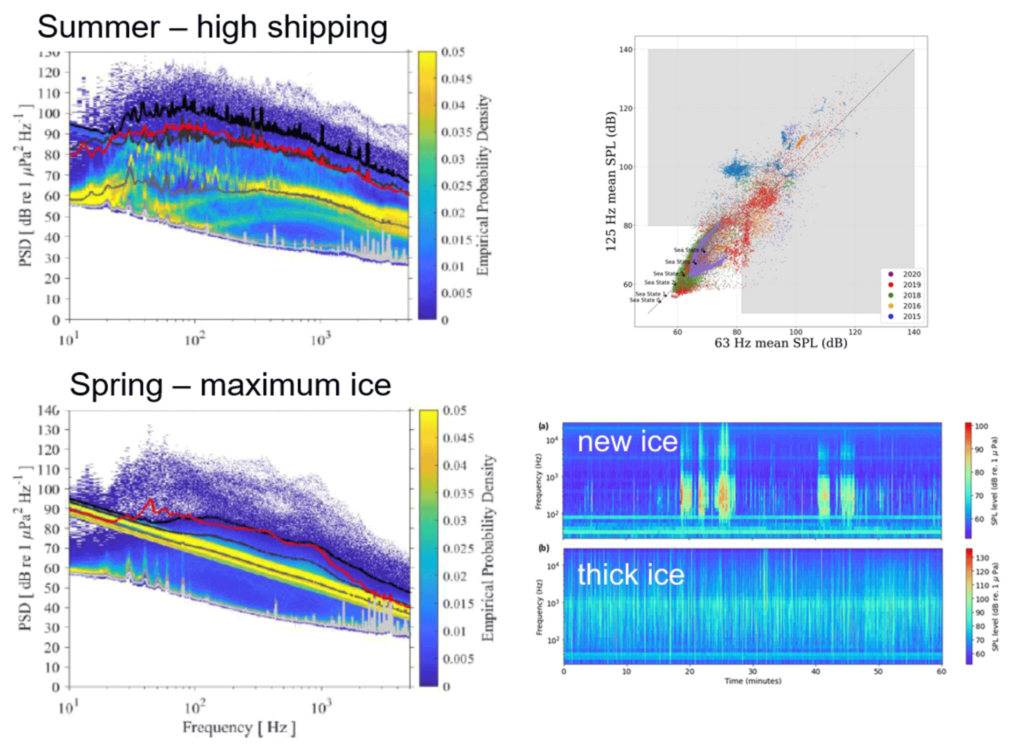Passive Acoustics measures the ambient sounds underwater, and they are extremely varied. Natural sounds include the weather above the surface (rain or snow, storms, winds and waves), the sounds of the ice cover (when it is forming, when it is thick enough to cover the whole surface and when it breaks down again) and even the odd earthquake far away. Animal sounds reflect the diversity of local marine life, from marine mammals to some fish species. There are also sounds from human activities, like shipping (which can be heard far away), snowmobiles close to settlements and other offshore activities. This makes for very rich and complex soundscapes, varying with locations and with days, seasons and years.

Task 3.3 will develop the ways to measure and compare these signatures, using established tools like Power Spectral Densities (standardized across frequency bands), Sound Exposure Levels (to compare with the acoustic sensitivities of different marine animals) and percentile analyses. We use our peer-reviewed open-source package PAMGuide and other techniques like energy detectors, pattern matching and deep learning to identify acoustic signatures of interest. This can be used to assess how soundscapes change with time and with locations, contributing to the other Tasks in this Work Package.